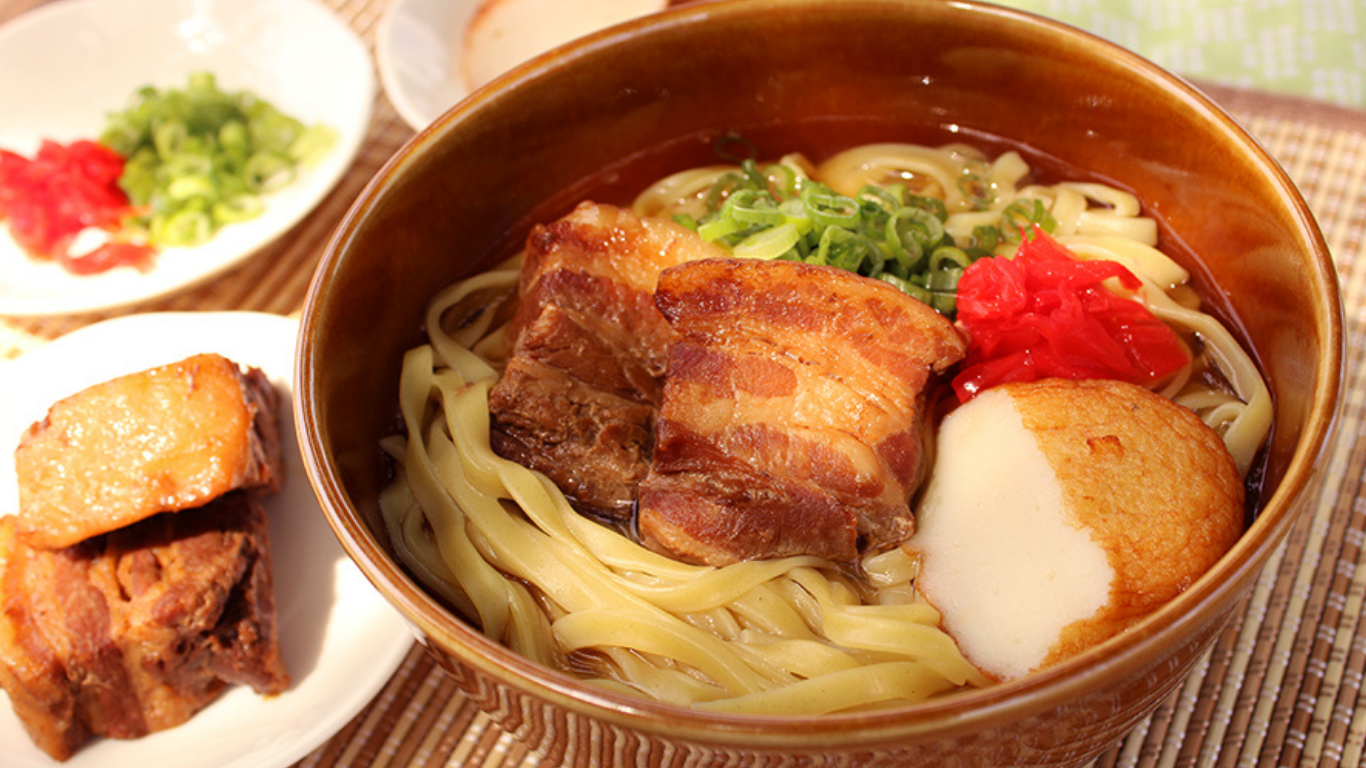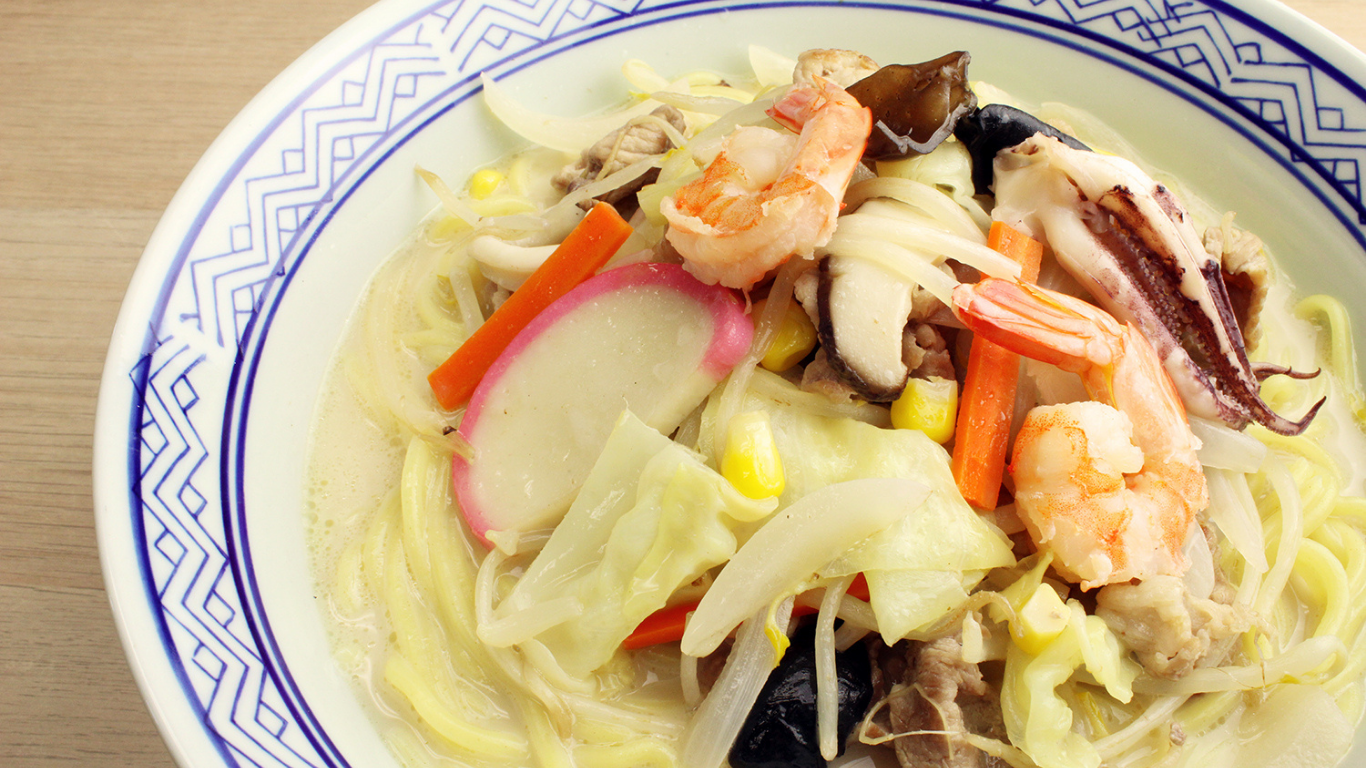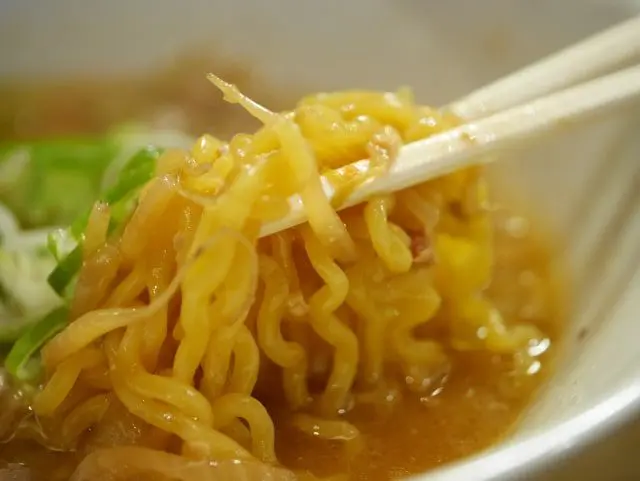Recreate Japanese Regional Ramen at Home: 10 Iconic Styles — From Hakata Tonkotsu to Jiro-Style
Published: Nov 20, 2025/ Last Updated:Nov 21, 2025
- 11 min read
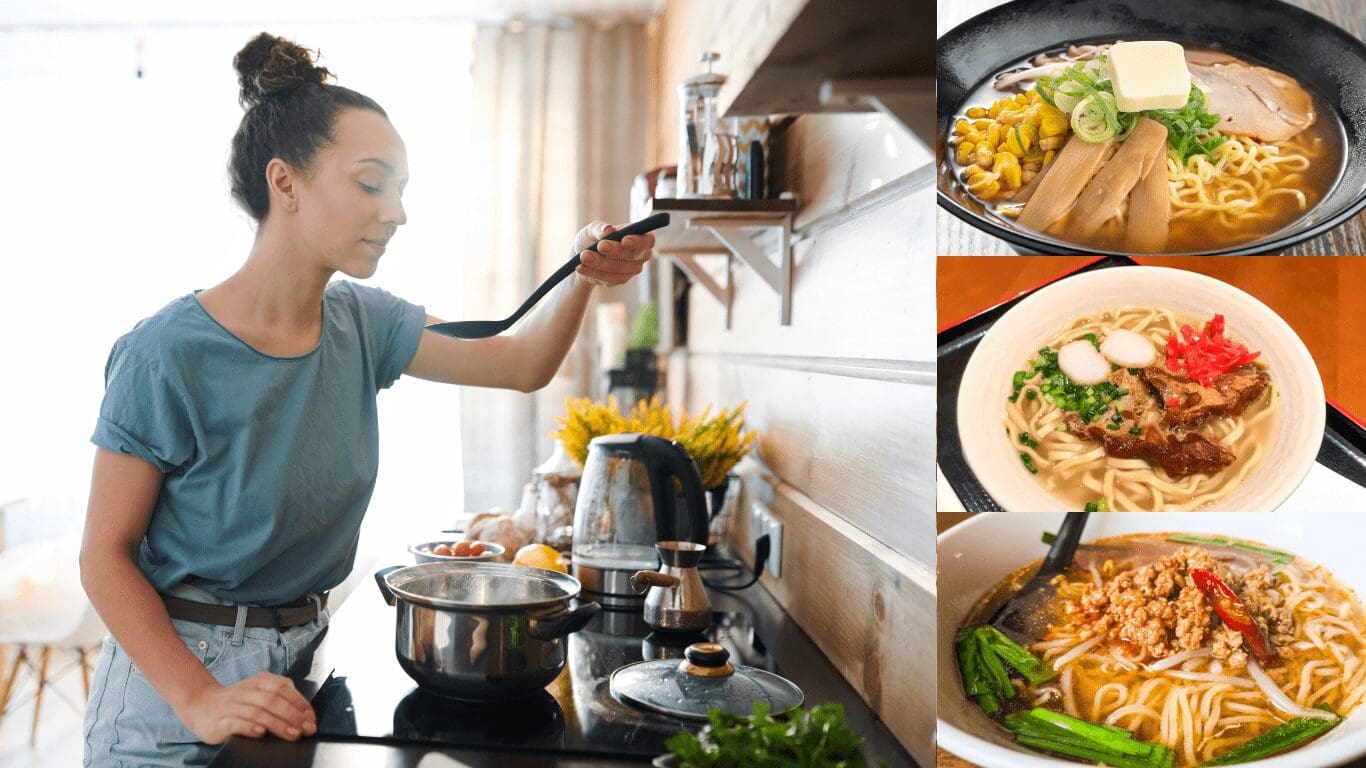
Ramen lovers in the U.S., this one’s for you. You’ve chased great bowls across town—now let’s bring Japan’s regional map into your kitchen. This guide turns 10 iconic styles of Japanese Regional Ramen into weeknight-friendly, confidence-building recipes. Four sections feature Myojo USA product pages and how-to videos along with general recipe—so you can literally cook from a product page (Sapporo Miso Ramen, Hakata Tonkotsu Ramen, Nagasaki Champon, Okinawa Soba)—while the other six highlight non-brand specific recreations use ingredients easily found across the U.S. You’ll find clear, practical tips on broth, tare (seasoning base), noodles, and toppings so your bowl sings, not struggles. Want a deeper primer on what “regional ramen” means? Start with our our article — then come back hungry.
- Index
■What is “Regional Ramen,” exactly?
In Japan, ramen didn’t freeze in place after it left Tokyo—it adapted to local climates, tastes, and ingredients until each area had its own signature bowl. Think of it as place-first ramen: Hokkaido’s miso-rich Sapporo bowls, Fukuoka’s silky tonkotsu with ultra-thin noodles, Toyama’s jet-black shoyu built for postwar laborers, Nagoya’s spicy Taiwan Ramen, and more. Each style pairs a particular broth and tare (seasoning base) with a specific noodle shape and finishing oil, plus toppings that signal “you’re here.” For a quick orientation (including styles you can find stateside), check out our explainer—next, we’ll cook through 10 styles with U.S.-friendly step-by-steps.
■Regional Ramen (Profile & At-Home Recreation)
1) Sapporo Miso Ramen (Hokkaido)

Regional Hallmarks
Sapporo popularized a robust miso tare over a hearty stock, served with medium-thick wavy noodles. The classic, photogenic signature is sweet corn and a pat of butter, a Hokkaido hallmark you’ll see all over local guides.
At-Home Recreation (U.S.-friendly)
Warm a skillet and briefly sauté a handful of bean sprouts with sliced onion or cabbage plus a touch of garlic and ginger until glossy and aromatic. In a separate pot, bring chicken broth to a gentle steam. Off the bowl, whisk in a miso tare made from red or mixed miso so it dissolves smoothly — hard boiling muddies the flavor. Cook medium-thick wavy noodles until chewy, drain well, and build the bowl: drop noodles first in the miso broth, then top it with your sautéed vegetables. Finish with the signature topping—sweet corn and a pat of butter—so it melts and perfumes the surface as you stir.
*Pantry tip: canned corn is perfect here, and most mainstream U.S. grocers will have chicken broth and miso in the international aisle.
Myojo Product page: Myojo Sapporo Miso Ramen.
Myojo Easy Method: Quick & Flavorful Sapporo-Style Miso Ramen
For an even simpler take, try our Myojo Sapporo Miso Ramen—crafted to deliver authentic Sapporo Miso flavor with minimal prep. Just boil noodles, heat the included miso soup base, and finish with corn and butter for that unmistakable Hokkaido touch.
Recipe video with Myojo Product:
2) Tokyo Shoyu Ramen (Tokyo)

Regional Hallmarks
A clear, soy-forward shoyu tare layered over chicken/seafood-leaning stock; aromatic, balanced, endlessly slurpable. Toppings typically include nori, menma (bamboo shoots), chashu, and a soft-boiled egg.
At-Home Recreation (U.S.-friendly)
Make a simple, clean double broth by steeping kombu in water until just below boiling, removing the kombu, and then adding in katsuobushi (bonito flakes) to infuse for a minute or two. Strain and combine 1:1 with chicken broth; keep the heat gentle to preserve clarity. In each serving bowl, add a quick shoyu tare (soy sauce with a splash of mirin and pinch of sugar), ladle in the hot broth, and taste—adjust tare for a balanced, soy-forward snap. Boil the noodles until spring, then drain well. Slide them into a bowl and top with nori, jarred menma, sliced chashu (store-bought is fine), scallions, and a jammy soft-boiled egg. All ingredients are easy U.S. finds (dashi packets also work if kombu/katsuobushi are out of reach).
3) Jiro-Style Ramen (二郎系, Tokyo)
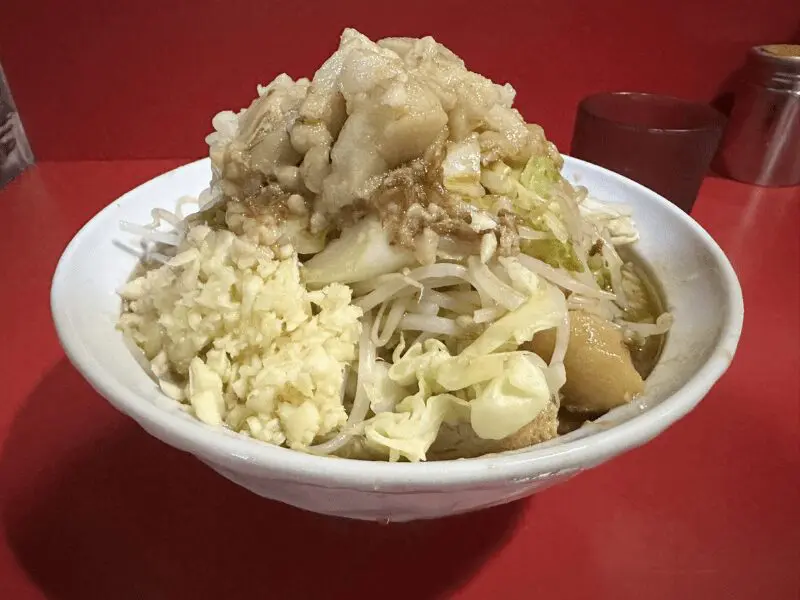
Regional Hallmarks
A cult ritual built on yasai mashi (a mountain of bean sprouts & cabbage), chopped raw garlic (ninniku), pork back fat (abura), and karame (salty soy base) over a fatty tonkotsu-shoyu soup—with seriously thick, chewy noodles. Ramen comes with its own “magic spell”—ordering lingo—and a rich customization culture. For the full breakdown, see our guide: “Hakata Ramen, Iekei Ramen, and Jiro-Kei Ramen: How to Order These Unique Ramen Like a Pro!”.
At-Home Recreation (U.S.-friendly)
First, make an easy soup:
- Option A (15 min): simmer 2 cups chicken broth + 1 cup light dashi (packet OK). Season with a concentrated shoyu tare (start with 2–3 tbsp soy + 1 tsp sugar), then whisk in 1–2 tsp rendered pork fat (lard or back fat) to add Jiro-like richness.
- Option B (30–40 min): brown pork belly or trimmings to render fat; add chicken broth + a little dashi, simmer 20–30 min, strain, and season with the same tare. Cook thick, chewy noodles until firm.
Quickly blanch the cabbage and bean sprouts separately to keep them hot and crisp. Build the bowl like a seasoned Jiro regular, layering in this order: noodles → hot porky-shoyu soup (adjust karame with a splash of tare) → a yasai mashi (a mountain of bean sprouts & cabbage) → a spoonful of abura (pork back fat) → a crown of fresh chopped garlic. You’ll capture the essence of the style—fatty pork-shoyu richness, veggie mountain, and a bold raw-garlic punch—using ingredients available at any U.S. market.
4) Yokohama Iekei Ramen(家系, Kanagawa)
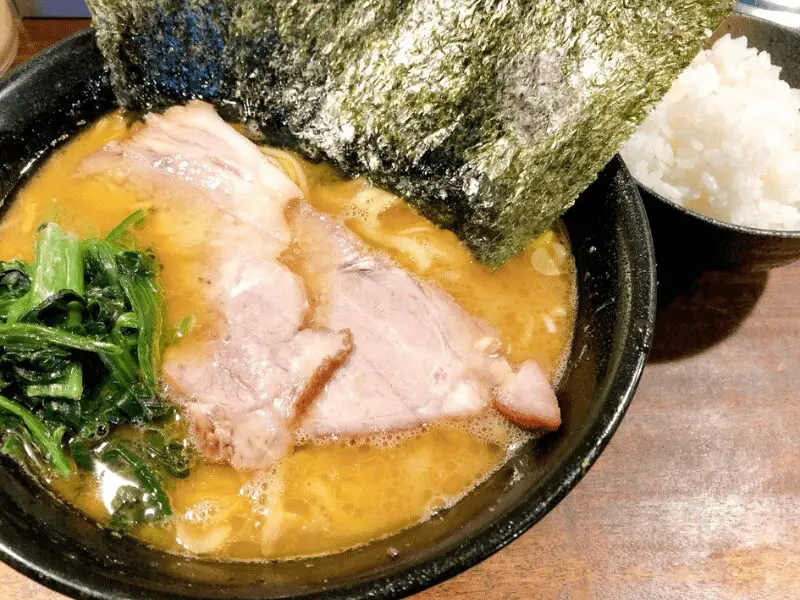
Regional Hallmarks
A tonkotsu-shoyu hybrid accented by chicken oil (chiyu), with thick, straight noodles and the classic spinach + nori toppings. Many shops let you adjust the tare strength, oil level, and noodle firmness—great cues for fine-tuning your home version.
At-Home Recreation (U.S.-friendly)
Make the soup using one of these easy paths, then finish as usual:
- Path A: Tonkotsu concentrate + shoyu tare (fastest). Dilute a store-bought tonkotsu soup base with hot water per package instruction (or slightly stronger), then season in the bowl with a shoyu tare until savory but balanced. This reproduces Iekei’s tonkotsu-shoyu backbone in minutes.
- Path B: Chicken stock + a little tonkotsu base (weeknight blend). Warm chicken broth, whisk in a small spoon of tonkotsu concentrate for pork richness, then adjust with shoyu tare. This mimics the pork-and-chicken mix Iekei is known for.
Right before serving, stir in 1–2 tsp chicken oil (chiyu) for aroma and sheen—render your own from chicken skin (aka schmaltz) or use ready-made.
Boil thick, straight noodles to a chewy bite. To assemble, place noodles in the bowl after preparing the hot tonkotsu-shoyu soup, then finish with the classic spinach + nori set; add chashu and a soft-boiled egg if you like. For extra richness, a few more drops of chiyu; for extra salinity, a touch more tare. This approach aligns with Iekei’s core profile—pork-and-chicken umami, soy depth, and chicken oil finish—using ingredients U.S. home cooks can grab tonight.
5) Toyama Black Ramen (Toyama)
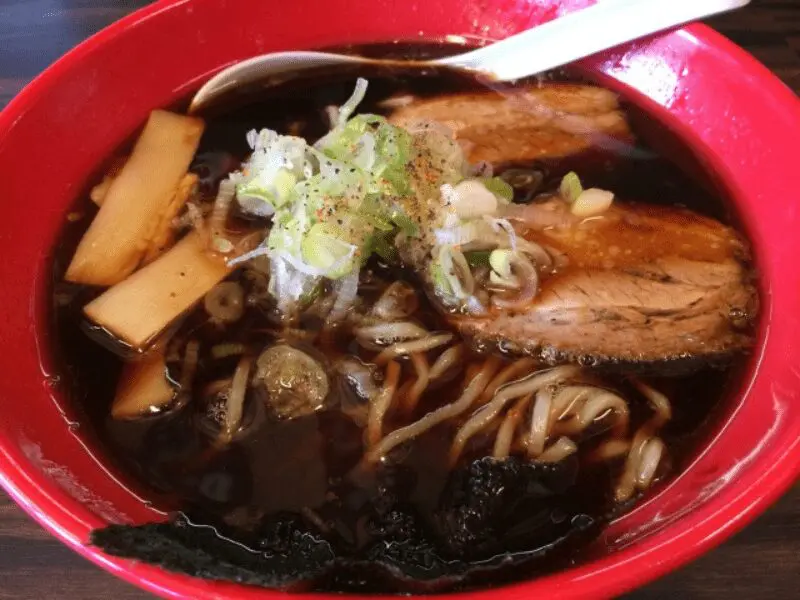
Regional Hallmarks
This hidden gem is jet-black, peppery shoyu created for postwar laborers; most sources place its birth in the late 1940s (often cited as 1947) at a Toyama shop known as Taiki. The soup is intentionally salty—best enjoyed with rice and firm noodles.
At-Home Recreation (U.S.-friendly)
Make a bold tare directly in each serving bowl: 3–4 tbsp koikuchi (dark) soy sauce + 1 tsp mirin + ½ tsp sugar, then set aside. For the broth, heat 2 cups chicken stock + 1 cup light dashi (a kombu/bonito packet is fine) until very hot—this chicken-plus-dashi combo echoes what many shops use (chicken base with fish accents) and stands in well for chicken/pork blends noted in Toyama write-ups. Pour the near-boiling broth over the tare so the soup turns jet-black and bracing; taste and add a spoon more soy if you want it saltier. Boil firm, medium-thick noodles, drain, and slide them into the bowl. Finish decisively with fresh-cracked black pepper (a hallmark) and plenty of sliced scallions; add chashu if you like and serve with a small bowl of white rice—the postwar “worker’s lunch” pairing that makes the punchy salt level make sense. For optional nuance, a few grates of fresh ginger can round the sharpness.
6) Taiwan Ramen (Nagoya)

Regional Hallmarks
Despite the name, this spicy bowl is a Nagoya original—credited to Taiwanese-cuisine restaurant Misen—with minced meat, garlic, nira (garlic chives), and chilies in a punchy broth. The shop legend even notes it began life as a staff meal.
At-Home Recreation (U.S.-friendly)
Heat a skillet with neutral oil and brown ground pork (or pork/beef) with plenty of garlic and chili paste or chili oil until fragrant and a little crisp at the edges. Deglaze with chicken stock, scrape up the toasty bits, and simmer briefly. Season with soy sauce and a pinch of sugar for balance. Right before serving, stir in nira (garlic chives)—or scallions if that’s what your market has. Cook medium-thick noodles until chewy, drain well, and ladle the spicy, meaty soup over the top. The Chili heat is fully adjustable in the bowl, making this a perfect weeknight “spicy fix” using ingredients from any U.S. grocery stores.
7) Hakata Tonkotsu Ramen (Fukuoka)
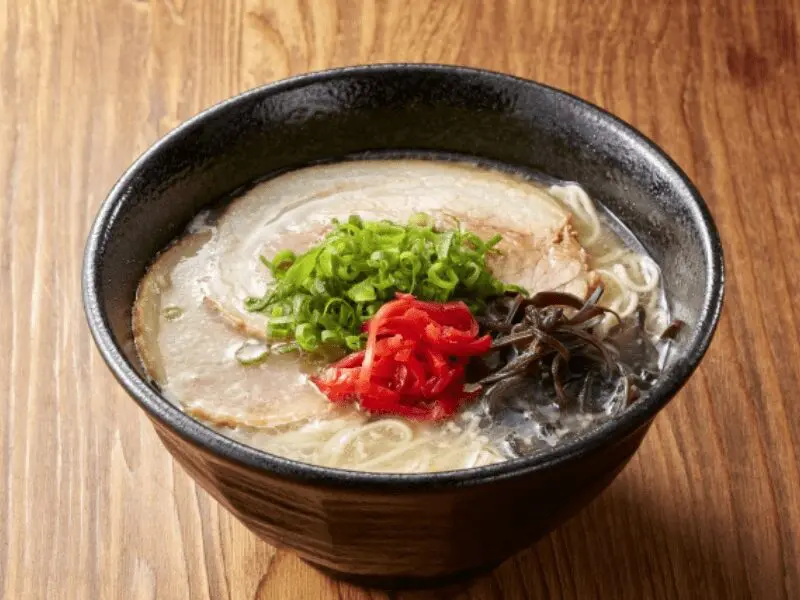
Regional Hallmarks
Hakata-style ramen is famous for its silky pork-bone broth with ultra-thin, straight noodles made for fast cooking and kaedama (extra noodles). The traditional toppings are simple yet defining: sesame, scallions, and beni shoga (red pickled ginger).
At-Home Recreation (U.S.-friendly)
Keep the broth hot and creamy, and boil ultra-thin, straight noodles for just a few seconds — they’ll continue softening in the bowl. Build quickly: noodles → steaming tonkotsu-style broth → sesame, scallions, and beni shoga (red pickled ginger); offer kaedama halfway through, just like they do in Fukuoka shops.
- Quick “Cheat” Broth (No Bones Needed)
For a simple yet flavorful alternative to traditional pork-bone broth, gently heat a blend of unsweetened soy milk, chicken bouillon or stock, lard, and a touch of dashi and soy sauce.
Keep it below boiling to maintain a silky, emulsified texture. This clever shortcut recreates a rich, satisfying, milky tonkotsu-style soup—done in about 10 minutes.
Myojo Product page: Myojo Hakata Tonkotsu Ramen
Myojo Easy Method: Authentic Hakata Tonkotsu in Minutes
Experience real Hakata flavor at home with Myojo Hakata Tonkotsu Ramen. Simply cook the noodles, warm the included tonkotsu soup base, and top with scallions, sesame, and beni shoga (red pickled ginger) for a true Fukuoka-style experience.
Recipe video:
8) Kumamoto Ramen (Kumamoto)

Regional Hallmarks
A tonkotsu finished with mayu (roasted/black garlic oil) for smoky depth; noodles are often a touch thicker than Hakata’s.
At-Home Recreation (U.S.-friendly)
Bring your soup to a lively steam and season with a shoyu-forward tare until savory. If you don’t have pork stock ready, use one of these weeknight-friendly options:
- Easiest (store-bought base): Dilute a tonkotsu soup base/concentrate from a Japanese or Asian grocer according to package instructions—these products are designed to deliver pork-bone richness quickly.
- Quick broth hack (from pantry staples): Blend chicken stock with a touch of dashi, then enrich it with pork fat (rendered from belly/fatback) and a splash of unsweetened soy milk to mimic tonkotsu’s signature body and pale opacity. This well-known shortcut yields a convincingly creamy base without the need for an all-day boil.
*Style note: Kumamoto broth is often lighter than Hakata and may include some chicken stock in the mix, so the cheater approach still reads true to type.
Cook noodles slightly thicker than Hakata’s to a firm bite and portion into bowls after ladling over the hot soup on tare, then finish with mayu (black garlic oil)—store-bought is perfectly fine—by drizzling a thin ring so the aroma floats on top. Add fried garlic chips and scallions. The key is restraint: mayu should land with a smoky accent, never burnt or dominant; start with a small drizzle and add more only if the bowl asks for it. (If you’d like to make mayu, slow-cook garlic in oil until fully black, then blend/strain.)
9) Nagasaki Champon (Nagasaki)
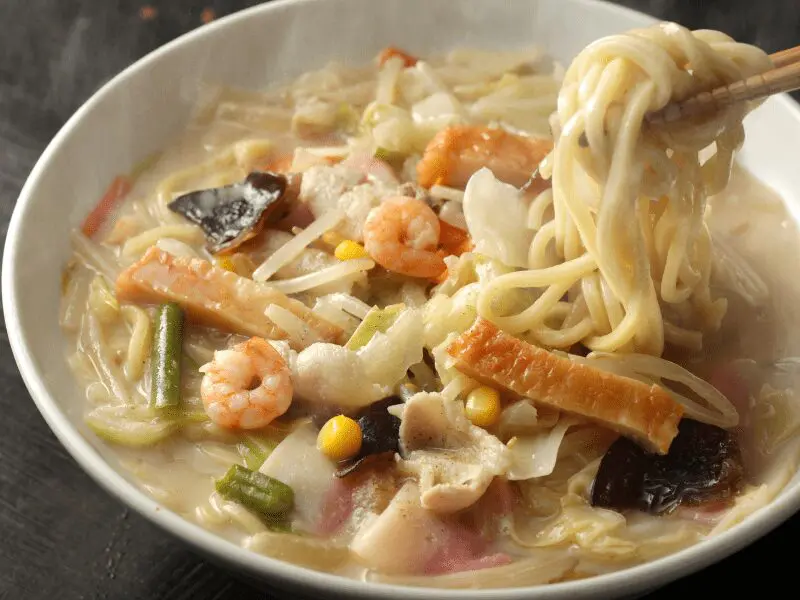
Regional Hallmarks
Champon is a true one-pot comfort dish—you stir-fry meat, seafood, and vegetables, then simmer the noodles directly in the soup instead of cooking them separately. Fun fact: November 3 is officially “Champon Noodle Day,” established by the Nagasaki Prefecture Raw Noodle Association to celebrate local food culture and craftsmanship.
At-Home Recreation (U.S.-friendly)
Heat a wok or deep skillet and stir-fry sliced pork, a frozen seafood mix, and mixed vegetables (cabbage, onion, carrot) in a bit of lard or neutral oil until just glossy. For the soup, whisk together 2 cups chicken broth + 1 cup dashi (a packet is fine) and season with 1 tbsp soy sauce + 1 tbsp sake + 1 tsp sugar. To mimic champon’s lightly milky appearance and flavor without hours of simmering bones, stir in 2–4 tbsp whole milk or evaporated milk (optional but traditional in many home recipes). Bring this to a steady simmer, then cook the noodles directly in the soup—that one-pot finish is the signature technique. Once the noodles are tender and the broth tastes integrated, ladle everything into deep bowls. You’ll get the classic balance of richness, gentle seafood sweetness, and a round, slightly creamy broth using U.S.-easy staples.
Product page: Myojo Nagasaki Champon (Back after 3½ years. Worth the slurp).
Myojo Easy Method: Classic Champon, Simplified
Experience the warmth of Nagasaki Champon in just minutes with Myojo Nagasaki Champon.
Simply boil the noodles and combine the included soup base with your choice of pork, seafood mix, and vegetables. For an authentic touch, let everything simmer together in one pot—that’s the Champon way.
Recipe video:
10) Okinawa Soba (Okinawa)
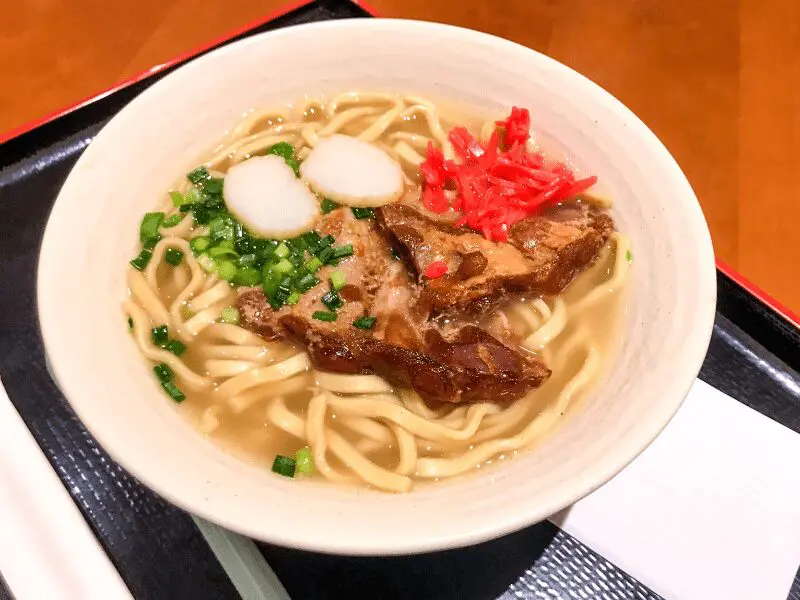
Regional Hallmarks
Despite the name, Okinawa soba uses wheat noodles (not buckwheat). The hallmark broth blends pork bones + katsuo-dashi (bonito) and is topped simply—often with pork belly or rafute (Okinawan spare ribs), fish cake, scallions, and red ginger.
At-Home Recreation (U.S.-friendly)
Pressure-cook or gently braise spare ribs until tender (so you can slice them later). Save the cooking liquid—that’s your modest pork base. Strain it, skim off excess fat, and keep it at a gentle simmer so it stays clear. In a second pot, make quick katsuo dashi (a dashi packet is fine). Combine the two broths in about a 2:1 pork:dashi ratio (for example, ~550 ml pork broth + ~350 ml dashi per 2 servings), then season lightly with soy sauce and a pinch of salt; keep the flavor bright rather than heavy. This mirrors how Okinawa soba is traditionally built—pork broth balanced by bonito stock—for a clean, aromatic soup. Then, boil Okinawa soba (wheat) noodles until springy and drain well. To assemble: noodles → hot pork-bonito broth → toppings of sliced spare ribs (a U.S.-friendly stand-in for rafute), fish cake, scallions, and a pinch of beni shoga (red pickled ginger). The result reads exactly as it should—light, clear pork depth lifted by katsuo aroma—using ingredients U.S. cooks can find easily (and dashi packets make the bonito step a snap).
Myojo Product page: Myojo Okinawa Soba
Myojo Easy Method: Light and Comforting Okinawa Soba
Enjoy the soothing taste of Okinawa at home with simple steps using Myojo Okinawa Soba.
Simply cook the noodles, dilute the included soup packet with hot water, and top with spare ribs, scallions, and beni shoga (red pickled ginger) for an authentic island-style experience.
Recipe video:
■Conclusion
Regional ramen is not about copying a shop; it’s about cooking in the style of a place or capturing its spirit using what you have. Use these frameworks to get a satisfying bowl on the table, then personalize—extra sesame for Hakata, a butter-corn “snowcap” for Sapporo, a peppery punch for Toyama, or mountain-high veggies for your Jiro-style. Here’s something to keep in mind: for four of the ten styles, you can click straight into Myojo USA product pages and be cooking in minutes. For the others, the methods above keep shopping simple and the results convincing.
If you make a bowl you’re proud of, tag our social media accounts (Instagram & TikTok) —we love seeing regional ramen come to life in American kitchens! And if you’re curious about the cultural “why” behind each style, circle back to our regional primer and noodle know-how.
Reference link:
RAMEN – Visit Sapporo : The Official Travel Guide to Sightseeing in Sapporo
How to Order at Ramen Jiro: A Crash Course
Toyama Black Ramen and Where to Eat It | Stories | The Official Tourism Website of Toyama “Visit Toyama”
Kaku Masayoshi Misen: Nagoya’s Addictively Fiery Taiwan Ramen in Kanda and Shinbashi | Nippon.com
